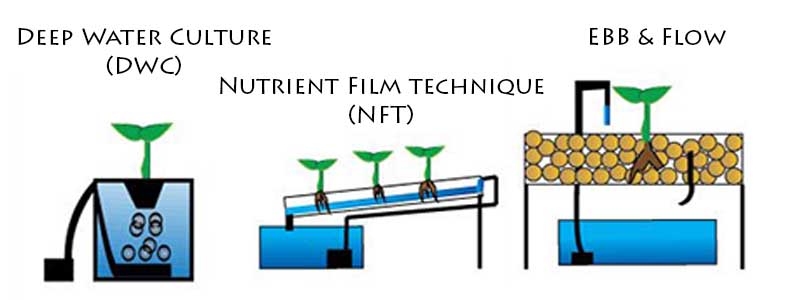Have you just heard of hydroponics and want to know what it is all about? This article is all for you!
You can think of this article as your hydroponics beginner guide to help you understand the important concepts of hydroponics gardening.
Introduction to Hydroponics
Hydroponics literally means ‘working water’. It was coined from two Greek words, hydro (water) and ponos (labor).
Hydroponics is basically the process of growing your plants without soil.
It is a controlled method of growing plants. With hydroponics, the grower takes full control of the plant’s environment just the way nature would have done.
A growing medium and water are all that’s required to serve the same functions the soil would have served the plants. The growing medium supports the plant’s position and helps transfer nutrients and oxygen to the root of plants, making growth effortlessly easy for the plant.
Perlite, sand, gravel, coconut fiber, Rockwool are popularly used growing media in hydroponics depending on what the hydroponic system requires.
Nutrients are required by plants for normal growth. Due to the soil-less conditions of hydroponics, the nutrients are added to water in adequate quantities and kept in the reservoir for plants.
Sometimes, a water pump is needed to make available the nutrient solution to the plants and an air pump to ensure adequate plant oxygen supply.
Light is essential for plant growth. Hydroponics is usually indoors, so grow lights are needed to provide sufficient light for your plants.
There are six main types of Hydroponic systems. They differ from each other only in the way they supply nutrients, water, and oxygen to your plants.
They include:
Wick System
It involves using a wick to transfer the nutrient solution from your reservoir to your growing medium. It is the simplest of the Hydroponic systems to practice.
Deep Water Culture
With DWC, your plants are fixed in net pots, and the net pots are suspended on a Styrofoam placed on the surface of the reservoir. This way, the plant roots have access to the nutrient mix. An airstone, water pump, and air pump are needed in this system.

Ebb and Flow System
In the ebb and flow system, your plants need to sit in a pot filled with a growing media. The pots are then placed in a large tray that allows water in on one side and water out on the other side.
The ebb and flow system uses a timer to control the inflow and outflow of the nutrient mix in the reservoir from the tray. A water pump is needed to effect the movement of the nutrient mix.
Nutrient Film Technique (NFT)
The NFT system is quite similar to the Ebb and Flow system only that the NFT system does not require a timer and the opening in the grow tray is only for draining the nutrient mix back into the reservoir. Waterflow from the reservoir into the grow tray is continuous.
Aeroponics
Just like the NFT system, in Aeroponics, no growing media is used but plants root are suspended in the air and are constantly sprayed with a nutrient mix. The sprayed nutrient mix drains back into the reservoir, and the plants’ roots are sprayed again.
The difference to soil growing
The difference between Hydroponics and Soil Growing isn’t only the soil-less conditions of hydroponics growing. There’s more…
If you choose to grow with soil, you will need to provide enough space for your plants’ roots to spread through the soil so they can get the nutrients they need.
On the other hand, Hydroponics save a lot of space since plant roots are directly in nutrient solution and there’s less stretching.
Hydroponics conserves water to a very large extent. You can reuse your nutrient mix over and over again. Also, you don’t have to worry about the water in your reservoir getting evaporated since your reservoir has a lid covering it.
Sadly, growing with the soil requires lots of water that cannot be reused.
You won’t need to weed your hydroponics garden since it doesn’t use soil to grow. Also, the incidence of pests and diseases is reduced drastically.
Why you should try Hydroponics
Over the years, hydroponics growing has proven to be profitable for growers to practice as there are lots of advantages attached to it.
Here is why you should try it out:
- You can grow your plants anywhere without any serious concerns about soil or weather conditions. Also, the physical work involved in growing is reduced.
- Hydroponics has proven effective in growing plants. They grow faster and stronger with impressive yields.
- Hydroponics puts you in charge of your growing environment. You can provide ideal conditions required by your plants ensuring maximum productivity.
Conclusion
Hydroponics is interesting and easy to start for beginners. I hope this article helps clear those doubts you had.

